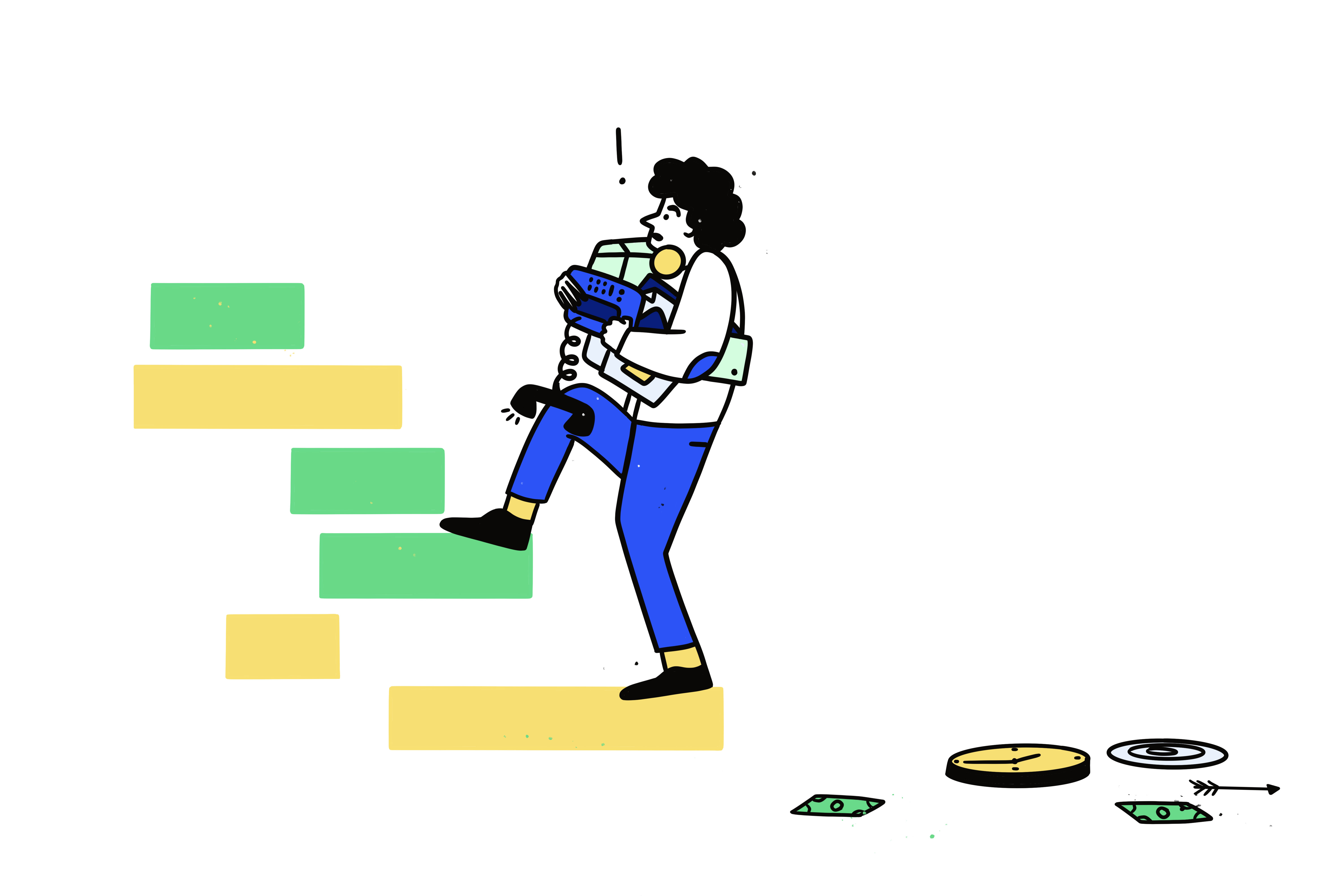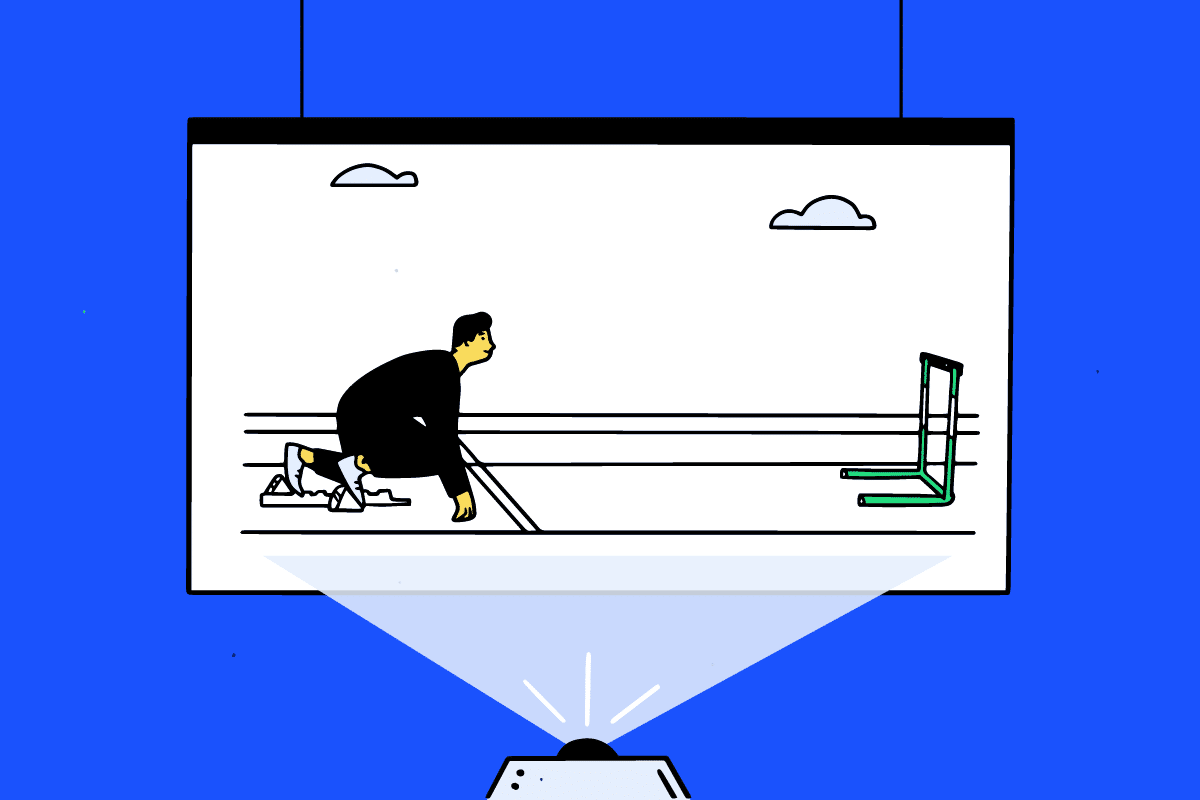A project kick-off is the foundational step any team should take when signifying the official start of the project work and processes. Prior to kick-off, there should be several project clarifying steps completed, with the kick-off itself representing the actual commencement of the work involved in the project. To do this, a well collected and formatted slideshow presentation should be completed with the team.
The goal of a project kick-off is to bring multiple teams and stakeholders together to clearly outline the guardrails of the project. The project kick-off also helps set cultural values and gives everyone the opportunity to be grounded in the same set of standards. This deck and meeting also sets the framework of the project, as well as gives the team(s) and stakeholder(s) an example of the quality of work that is expected moving forward.
Table of contents
Prerequisites for a Project Kick-Off
The project kick-off prerequisites include:
- Setting forth and clarifying the agenda and information to be presented
- Understanding who the team’s key stakeholders are
- Setting or reviewing cultural values
- Hitting the high-level standards of the project
- Planning next steps once the meeting has concluded
Best Agenda for a Project Kick-Off
Gathering
The best agenda for project kick-off includes having a five-minute gathering period or allowance of time at the start of the meeting where you are expecting people to arrive. This gives consideration to those involved in a previous meeting ending at or overflowing into your start time. Additionally, allowing that gathering time also helps with some of the most common late-arriving offender’s excuses:
- Had to walk between meeting rooms
- Stopped for a glass of water
- Bio break
- Something “urgent” came up
You need not post or send anything about the gathering period. SImply notify the participants of the actual start time for the meeting. However, don’t start to record or begin the meeting prior to the end of that five-minute initial gathering period.
Focus
The next meeting agenda item should be a focus period. This is a newer step I first encouraged at Eileen Fisher a couple years ago which really helps set a mental break between the previous meeting or other obligations. Further, it is a great way to have everyone set aside their phones and close laptops and allows everyone to really be grounded in the current meeting. Read the article on setting focus for a meeting for ideas how to carry out this portion of your agenda.
Agenda
After focusing the team, the agenda of your meeting should be a section of your presentation as well. It should list all the high-level sections and include both the gathering time and focus period on that list. This will help illustrate your forethought, give you the template information to include in meeting best practices, and giving everyone a strong sense of reliability in the process.
Project Overview
After you have read through the agenda, the next section to cover is the high-level scope of the project. This could be a paragraph about the project’s scope, general bullet points of do’s and don’ts, the goals of the project, and even the main constraints. The key here is to advise and align everyone with regard to the general purpose of the project, but not go too deeply into the details of “how.”
High-Level Timeline
When your project overview is announced, it should be followed with a high-level timeline. It is always best to have this timeline to illustrate to everyone how the bigger goals of the project are expected to be carried out. At this point, you may not have all the “how” answers, but the expert knowledge of key planners should be used to illustrate approximate timing of your general process.
This high-level timeline should include major areas like:
- This kick-off meeting
- Discovery periods
- Project planning
- Requirement sign-offs
- Development work
- Quality assurance
- User acceptance testing
- Production/deployment readiness
- Expected launch
- Hyper care support
- Your project close-out processes
The key is to plan these things at a high level to start the conversation with the teams in your follow-ups.
Project Team
Another important section should outline your project team. If you have the time or need to do so, you could also create a roles and responsibilities matrix (RACI). It is VERY important to at least put in writing the steering group that will be leading all the major decisions of the project that will help to guide the project around pitfalls, stay within the guardrails of the scope, and keep everything moving.
Everyone on the kick-off should understand who your possible partners or vendors are, as well as the person(s) leading each of those areas. It is not necessary to elaborate on each of the individual people supporting the project, but you should at least identify the stakeholders that are going to be leading each of those teams.
Another important bit of information to relay to the project team is the larger governing body, usually the C-Suite. Normally, the project’s progress is presented at a high-level to a senior leadership group in order to align the organization. Informing the projec team who will hear about the status of the project and who will be presenting the progress sets an expectation on the level of scrutiny or even level of support.
It is also worth noting that having this deck and maintaining a consistent process will help the reporting team ultimately carry the project KPIs to your C-Suite, your board, and even the owner of the company, as well as de-risk the possibility of shared information being inaccurate.
Project Culture
After identifying the team, it is extremely important to set expectations regarding how the team should be communicating, how the team should be working together, and also set straightforward guidelines on project culture. For each project culture area, be sure to read them aloud and in full. This should be something that you share on every one of your project kick-off decks. The repetition will drive home how you expect everyone to be working together.
Next Steps
By the end of your project kick-off meeting you should always have pre-planned next steps. Next steps could literally be that you have workshops or discovery sessions planned; it could be that you need to start sharpening your pencil on the project scope; or it could simply note getting a sign-off on your requirement documents. Regardless of the next steps, they should be clearly laid out at the end of your deck so that everyone in the meeting has some idea of what is expected of them following the meeting.
Workshops
If you have a schedule of workshops or discovery sessions already defined, it’s really great to have that on everyone’s calendars prior to the meeting. It is also a good idea to show the schedule of how those workshops are lining up across all of your work streams, individual vendors or even internal stakeholders. Workshops should be the deep-dives in any of the major scoping or requirement areas of your project. This would be considered part of the discovery or planning process of the project. The results of these meetings will directly help conceive the approach of the solution and build any requirement documents.
Round Table
Before you close the meeting and offer next steps, you should hold a couple minutes at the end of the meeting for a round table discussion. This could be anything from actually getting into specifics on the project or simply clarifying some of the guard rails that you hit at a high level. You should cushion against delving in too deep into the project specifics because the expectation is that you have already these more detailed deep dives planned for the near future.
Closing a Project Kick-Off
So again the major components for the agenda or a gathering session settling in high level scope. Timeline. Project team. Project culture. Next steps. Workshop schedule. And a round table.
Closing a project kick-off should be the same as closing any of your meetings. Insure you can send notes in a timely manner after the meeting and copies of any documents shown or discussed. Add a list of who attended and who did not attend the meeting so everyone has an understanding of who to connect with and fill-in on the kick-off details if they were unable to attend.
Do’s and Don’ts for a Project Kick-Off
| Do’s | Don’ts |
|---|---|
| Allow time for people to gather prior to jumping into your kick-off. | Expect everyone to attend; and if they don’t, remind them to provide a substitute from their team. |
| Set a focus for the meeting to ensure everyone is zeroed-in. | Let people stay on their phones and laptops during the meeting if it is not for the meeting at hand. |
| Outline a simple agenda and share it before, during and after the meeting. | Make the agenda too detailed–this will make people feel overwhelmed. |
| Review the project goals and objectives early in the presentation. | Provide solutions to achieve the goals and objectives in this kick-off. |
| Provide a timeline that generally outlines the process of the project and shows possible timing. | Show a work breakdown structure of the project that is too derailed for the short meeting. |
| Identify and review who the key stakeholders of the project are and those to whom the status will be reported. | Assume everyone on the team has the details, and encourage the leaders of each group to relay the information independently. |
| Set expectations of the project culture to ensure smooth flow of communication and cooperation. | Enforce siloed processes or dead end any constructive conversation. |
| Have next steps outlined so that everyone will understand what is expected of them after the meeting. | Ask for immediate approvals after a kick-off meeting or anything delivered that day. |
| Provide time for a question and answer session or continue any conversations from earlier in the deck. | Talk about solutions or conclusively define the timing of the project before the requirements are agreed upon. |
Use our toolkit

PROJECT MANAGEMENT – PRESENTATION DECK TEMPLATE
Apply the knowledge from this article to our powerpoint and google slides template. Everything you need to run successful project management meetings and presentations.

